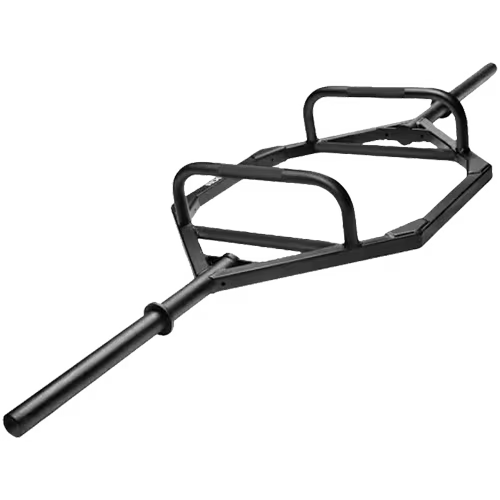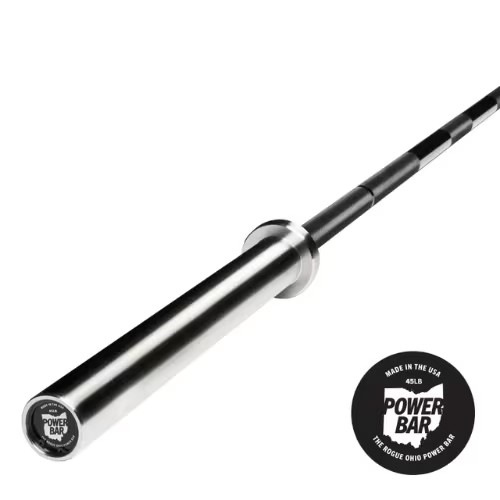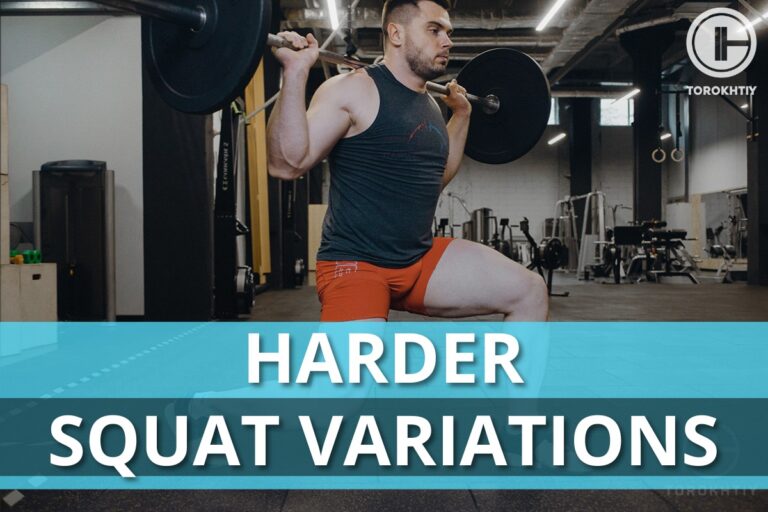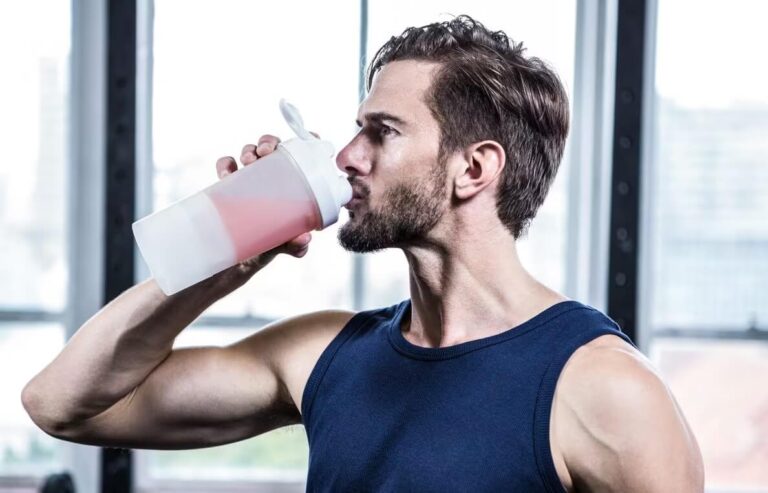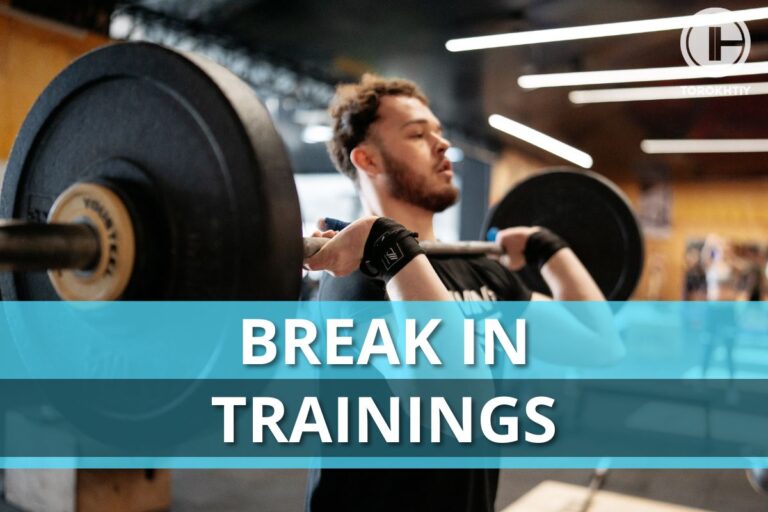Trap Bar vs Barbell Deadlift — A Detailed Comparison
Deadlifts are well-known for being superior for a large variety of fitness and performance goals – with a large body of research to back it up. Deadlifts are usually a staple of many quality strength training programs and form one of the three lifts performed in powerlifting competitions.
Multiple deadlift variations exist, with the trap bar vs barbell deadlift being two of them. With differences in muscles targeted, biomechanics, and sporting applications, I’ve provided an in-depth breakdown of both movements.
Which deadlift is better for building strength? Which type should you perform if you struggle with lower back pain? Keep reading below to find out!
Trap Bar vs Barbell Deadlifts: Due to the higher starting position, trap bar deadlifts target your quads more and place less stress on the lower back. Conventional deadlifts are more hip dominant, recruiting your glutes, hamstrings, lower back, and lats.

Trap Bar vs Regular Barbell Deadlift
When discussing the similarities and differences between the deadlift barbell vs trap bar, both are great movements to perform but have several differences that change their most suitable performance and sporting applications.
First, let’s look at the similarities in more detail:
1. Compound Movements
Both the trap bar deadlift or straight bar movements require many muscle groups to perform the exercise correctly. Whilst these may be different, they are still both classed as compound movements that help to build hypertrophy, strength, and power.
2. Durable Construction
Whether you’re performing the trap bar or straight bar deadlift, both barbells need to be able to take repeated impacts without breaking down. With this, both use durable metals such as stainless steel with a powder-coated finish.
Both also have loadable barbell sleeves that are commonly designed to fit both normal and Olympic-sized plates.
3. Hip Hinge
Despite the different starting positions, both require you to get into a hip hinge position similar to that when performing a squat. As long as you’re maintaining a neutral spine whilst keeping your shoulder blades pinned back, both require the same hip hinge pattern.
If you’re in the gym and deciding between a trap bar deadlift or conventional pull, here are the key differences:
1. Muscle Activation
Whether we are talking about different types of squats or deadlifts, a movement doesn’t have to be one or the other. A continuum exists, meaning a movement can be somewhere in the middle of both of them.
Due to the lower starting position, a barbell deadlift is more of a true hip hinge movement, recruiting muscle fibers from the glutes, hamstrings, spinal erectors, and lats. These muscles are collectively known as the posterior chain and work together to keep a neutral spine whilst pulling the hips forward as the bar comes off the floor.
A trap bar deadlift starts in a more upright position, meaning it predominantly targets the quads and traps more compared to the conventional movement. This makes it more of a squat-type movement and less of a true hip hinge.
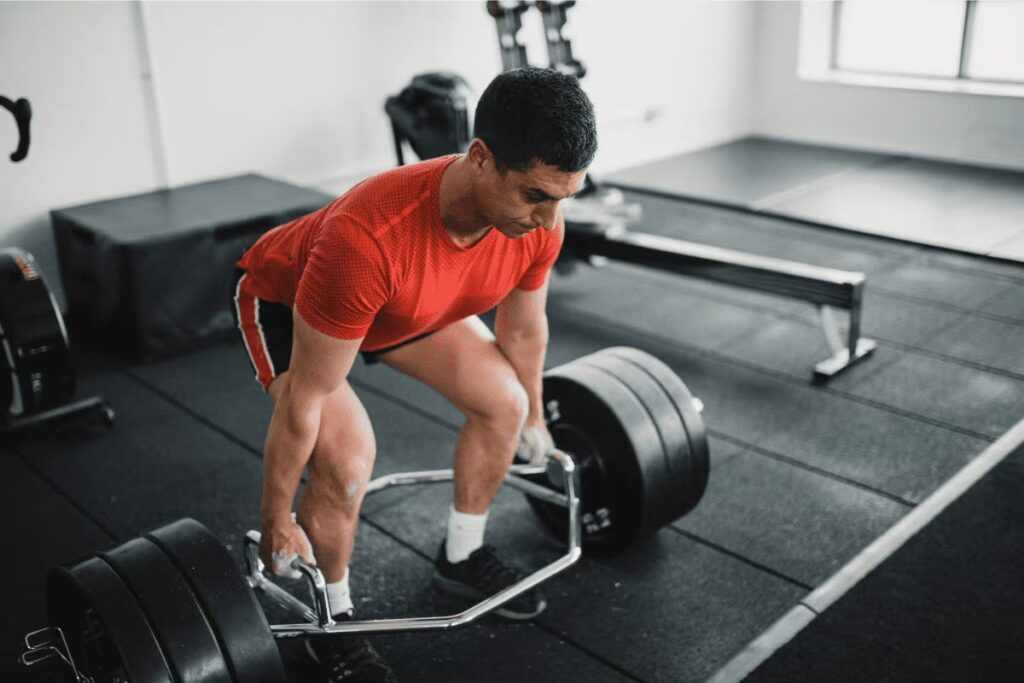
2. Barbell Shape and Dimensions
Perhaps the most noticeable difference between the two movements is the shape and dimensions of the bars. A trap bar, also known as a hex bar, has a hexagonal middle section with loadable sleeves at each end. The handles are raised off the ground and sit at each side of the body as you step inside the hexagon to lift the bar. Some trap bars can also be flipped over to use the bottom handles as well if you wish to start from a lower position.
Conversely, a conventional barbell is a straight bar of metal with the shaft located in the middle and barbell sleeves on either end. It’s much longer compared to a trap bar and needs to be lifted by the shins by gripping the bar at the front of you rather than to the side.
3. Learning Curve
So, are trap bar deadlifts easier? Most commercial gyms contain both bars, but the trap bar seems to be far easier to learn the correct technique due to the higher starting position.
If you’re a total beginner, the smaller learning save required to pull the trap bar means that it might be best to learn to hip hinge using that before progressing to a conventional barbell that requires more range of motion and is less forgiving on the incorrect form.
4. Safety
A conventional deadlift requires a bigger hip hinge and uses a more forward grip position, therefore placing more stress on your lumbar spine area when lifting.
If you suffer from lower back issues or don’t feel confident with the amount of core strength you have, using a trap bar whilst you build it up or work past the injury might be the safer bet.
With the conventional deadlift also requiring a more advanced starting position, there is more room to lose correct form and therefore lead to injury. Conventional deadlifts also tend to scratch and bruise your shins easier due to the close barbell position when lifting.
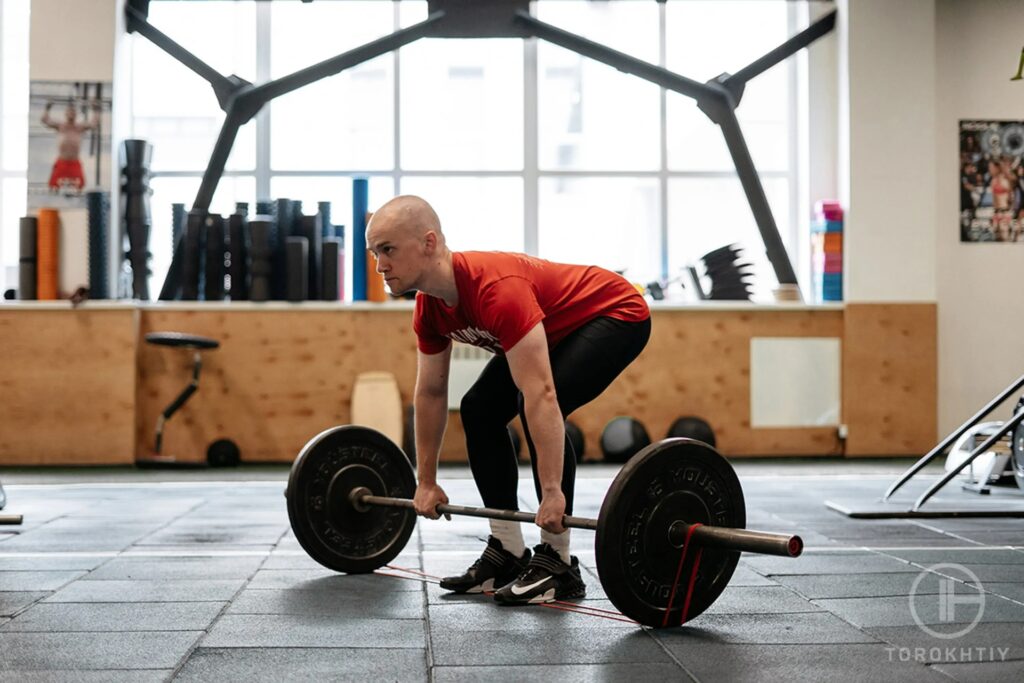
5. Sports Application
Both the trap bar deadlift and conventional deadlift are great at translating into better sports performance. By increasing explosive strength and power, you’re able to move faster and with more force making you better against your opponents.
However, the body and hand positioning in the trap bar deadlift allows for more explosive-type movements such as jumps and carries, both of which can’t be done with the conventional bar.
6. Hand Placements
With the trap bar deadlift, the handles are next to your sides rather than in front. This means that the only grip you’re able to use is a neutral one. With the conventional barbell being in front of your body, you can choose between a double overhand grip where the palms of your hands face down or a split grip where one hand faces up.
Trap Bar vs Regular Barbell Deadlift: Summary
Both barbells can be used to increase strength, muscle hypertrophy, and explosive power. Both bars can also help sports performance and are classed as compound lifts.
Compared to the trap bar deadlift, a conventional deadlift involves more of a hip hinge, meaning it uses more of the posterior chain to lift the bar off the ground. It also uses a longer barbell and has to be pulled up at the front of the body rather than at the side where a higher starting position can be used with the trap bar.
The trap bar typically has less of a learning curve and may be safer to use, especially if you suffer from lower back injuries or struggle to maintain a neutral spine throughout the movement.
1. Pros/Cons of Trap Bar Deadlifts
Positives:
Could be better:
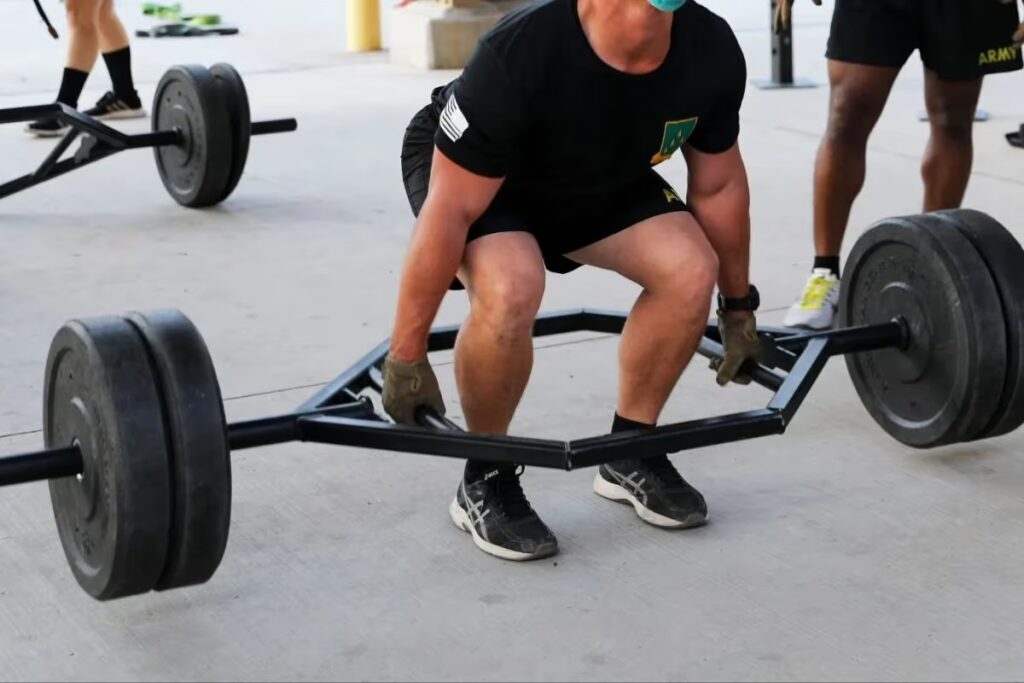
2. Pros/Cons of Regular Barbell Deadlifts
Positives:
Could be better:
When and Why Should You Use a Trap Bar Instead of a Regular Barbell?
When designing a training program for yourself or others, you’ll learn that a one-size-fits-all approach doesn’t apply. The best barbell to use depends on your body, your training goals, and your personal preference.
Hypertrophy — If your main goal of training is muscular hypertrophy, then the best barbell to use depends on what muscle you’re wanting to work. If you’re looking to improve your posterior chain, go with conventional deadlifts. If you want to target your quads more, trap bar deadlifts might be better for this training block.
Sports Performance — If you’re a competitive powerlifter, performing mainly conventional deadlifts is the obvious choice. However, including trap bar deadlifts as part of a training block may be an excellent way to work on the lockout portion of your lift.
In terms of sports performance, performing trap bar jumps and carries can help you become stronger, faster, and more dynamic on the field.
Rehabilitation — If you’re recovering from a lower back injury, the less stress placed on the lumbar spine area during the trap bar deadlift may make it the better option during rehabilitation.
Ability Level — If you’re a total beginner, it’s important to prioritize learning the correct technique first before progressing the weight too much. For beginners with lower ankle and hip mobility, starting with trap bar deadlifts may be the smart choice.
Some beginners may find conventional deadlifts much easier to perform, so make sure to try both before deciding which to progress with first. It’s also important to note that both can be used concurrently as part of a well-organized training program.
Deadlifting with a Trap Bar vs Regular Barbell
A trap bar deadlift, also commonly known as a hex bar deadlift, uses a barbell that’s shaped like a hexagon with barbell sleeves on either side allowing you to load the plates.
Inside the hexagon, a set of raised handles allows you to grip the bar in the middle with the weight sleeves extending out from your body instead of in front.
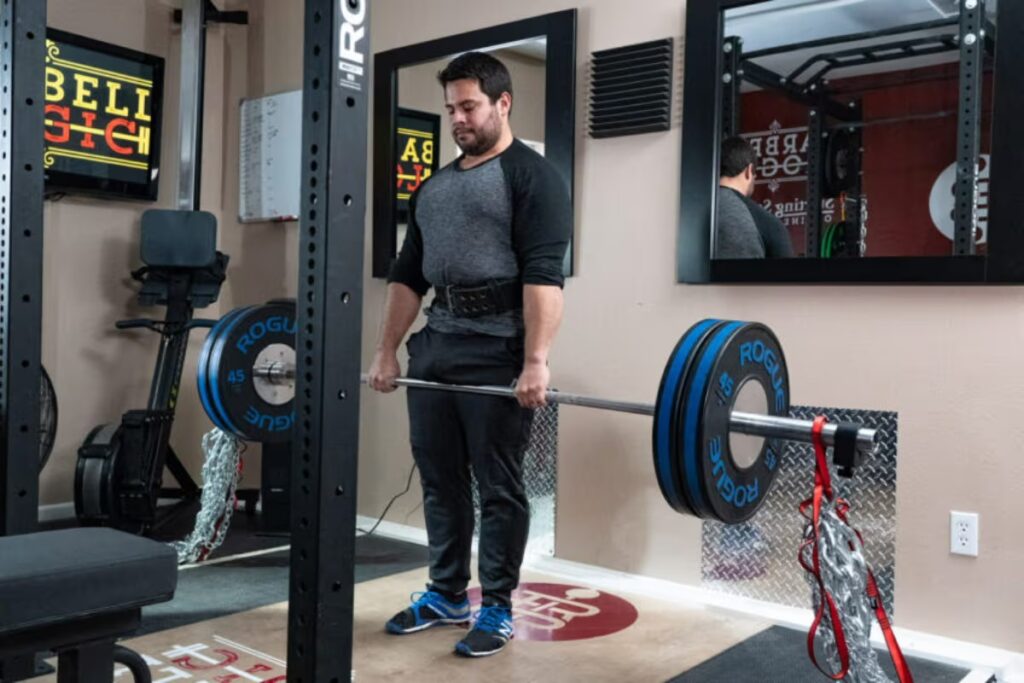
1. Trap Bar Deadlifts: How to Perform Correctly?
- Step inside the hexagon with your feet hip-width apart.
- Lower into a hip hinge whilst pulling your shoulder blades back.
- Grip the bar, engage your lats, and push through the ground to stand up with the bar.
- Keep a neutral back and neck position throughout the movement.
A regular barbell deadlift, also known as a conventional deadlift, uses a bar that most people think of when you mention deadlifting. The barbell is shaped in a straight line, with loadable barbell sleeves at either end. Unlike the trap bar, you grip the bar at the same height as the weight plates which forces you into a lower starting position.
2. Regular Barbell Deadlifts: How to Perform Correctly?
- Assume a hip-width stance and move your feet closer to the barbell until your shins almost make contact with the barbell directly underneath you.
- Lower into a hip hinge and grip the barbell shaft using an overhand or split grip position.
- Whilst keeping a neutral spine and neck, pull the bar off the floor keeping it close to your body throughout the movement.
- Lift up until your knees are locked.
Trap Bar We Recommend
Rogue Fitness has upgraded its original trap bar with the Rogue TB-2 Trap Bar, featuring a more versatile dual handle, SCH 80 pipe Olympic sleeves, and a lightweight 60 lb frame design.
Measuring 88.5″ L x 28.5″ W x 9″ H, the TB-2 trap bar is manufactured in the USA using durable 1.5″ square steel tubing that’s been molded into a hexagon shape. The Rogue TB-2 Trap Bar can be easily flipped over, allowing you to work on your lockout or overload on shrugging movements.
The raised parallel bar handles come 8.25″ off the floor and are spaced 25″ apart. Both handles feature a textured knurling pattern measuring 1.43″ in diameter. The 1.91″ Pipe sleeves are compatible with Olympic plates and have 16″ of loadable sleeve length.
The bar comes in Rogue’s signature black powder coating, with the Rogue logo in white at the front.
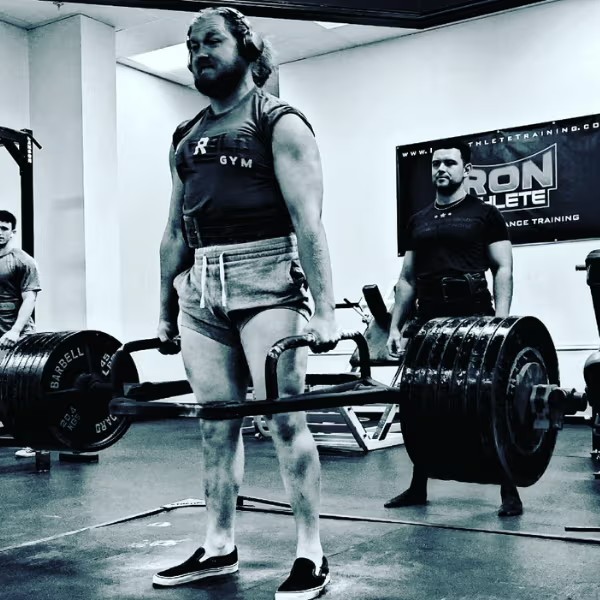
Regular Barbell We Recommend
The Rogue Fitness Ohio Deadlift Bar has been precision engineered to create a bigger amount of flex for optimal deadlift performance. Compared to normal barbells, it has a thinner 27 mm shaft diameter and a longer 90.5″ bar length. These factors make the barbell easier to grip and generate increased whip when lifting allowing you to pull the bar further off the floor without the plates leaving the ground.
With a PSI of 190,000, the stainless steel barbell is constructed in the USA. Rogue offers three finish options which are Bare Steel, Black Zinc, and E-coat. The barbell shaft features powerlifting knurl marks with no center knurl present.
Like many other high-quality Rogue bars, the Ohio Deadlift Bar features loadable sleeves with bushings using high-quality snap-ring construction.
FAQ
Are Trap Bar Deadlifts Safer Than Regular Barbell Deadlifts?
Performing trap bar deadlifts allows you to maintain a more upright posture when lifting, taking some stress off of your lumbar spine area. The trap bar moves some of the load from your back and hips onto your legs, making it a safer alternative if you suffer from lower back pain.
Do Trap Bar Deadlifts Still Count as Regular Deadlifts?
Both trap bar deadlifts and regular deadlifts involve pulling a weight off the ground to above your knees, essentially meaning they are both types of deadlifts. The main differences concern the muscles worked and stress placed on your lumbar spine area due to the bar movement path.
Which Bar Is Best for Performing Deadlifts?
The best bar choice for deadlifting depends on your ability level and goals. If you’re an elite-level powerlifter who wants to maximize the number lifted off the floor, go with a specialist deadlift bar. These are longer and thinner allowing the bar to bend under heavier loads.
If you suffer from lower back problems or want to work your legs more than your back, go with trap bar deadlifts.
Conclusion
Both deadlift bars are made from durable materials with loadable sleeves at either end. The main difference between them is the hexagon shaped frame and raised handles on the hex bar compared with the straight frame and shaft on a traditional barbell.
When choosing which bar to use, consider your individual goals, biomechanics, and training program. If you’re a beginner lifter or suffer from lower back issues, starting with hex bar deadlifts would be the better option.
If you’re an elite-level powerlifter, using a conventional barbell for most of your training allows you to reinforce the correct technique using the right movement pattern.
Do you have experience with using either barbell? Tell me about your training below!
Also read:
- Best Hex Bars
- Deadlift Trap Bar Weight
- Best Landmine Attachments
- Best Barbell
- Trap Bar Deadlift Benefits
- Trap Bar Exercises
- Best Stainless Steel Barbell
- Types Of Barbells
References:
- The Deadlift and Its Application to Overall Performance // National Strength and Conditioning Association: https://www.nsca.com/education/articles/tsac-report/the-deadlift-and-its-application-to-overall-performance/
- The Top 7 Deadlift Benefits, According to Strength Coaches // Livestrong: https://www.livestrong.com/article/464927-what-are-the-benefits-of-deadlifting/
- 5 Benefits Of The Trap Bar Deadlift That Will Convince You To Start Pulling // BarBend: https://barbend.com/benefits-of-trap-bar-deadlift/
Why Trust Us?
With over 20 years in Olympic Weightlifting, our team does its best to provide the audience with ultimate support and meet the needs and requirements of advanced athletes and professional lifters, as well as people who strive to open new opportunities and develop their physical capabilities with us.
By trusting the recommendations of our certified experts in coaching, nutrition, dietology, and sports training programming, as well as scientific consultants, and physiotherapists, we provide you with thorough, well-considered, and scientifically proven content. All the information given in the articles concerning workout programming, separate exercises, and athletic performance, in general, is based on verified data. We ensure that you can rely on our professionals’ pieces of advice and recommendations that can be treated as personalized ones which will benefit you and fully meet your needs.
The product testing process is described in more detail here
Author: Ihor Shymechko
Pro Olympic Weightlifter, Coach
Best Results: Snatch – 208 kg,
C&J – 240 kg
Ihor has been a professional weightlifter since 1996, boasting over two decades of competition experience. His notable achievements include clinching the European Championship in 2009 and securing a silver medal in the 105kg division at the Senior World Championships in 2011. Ihor represented his country in the 2008, 2012, and 2016 Summer Olympics. After retiring from competitive weightlifting, he transitioned to coaching, leveraging his vast experience to guide athletes who now compete on both national and international stages.

